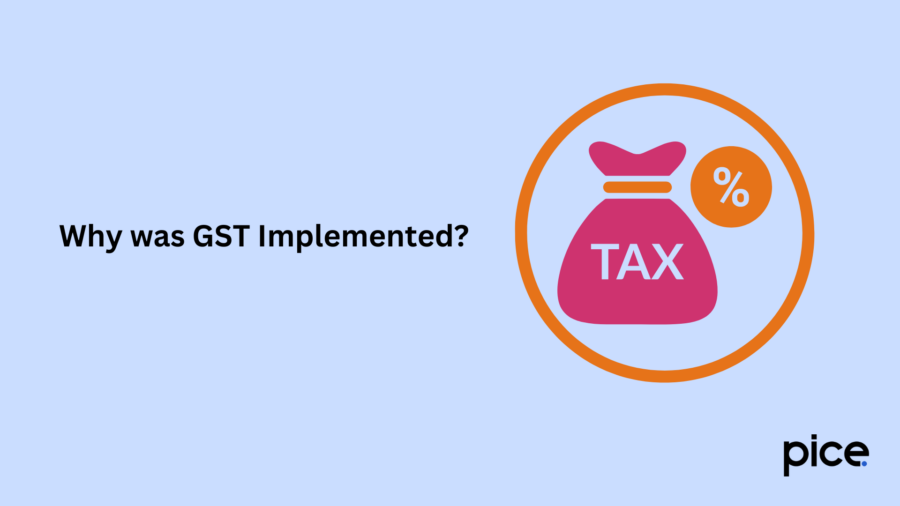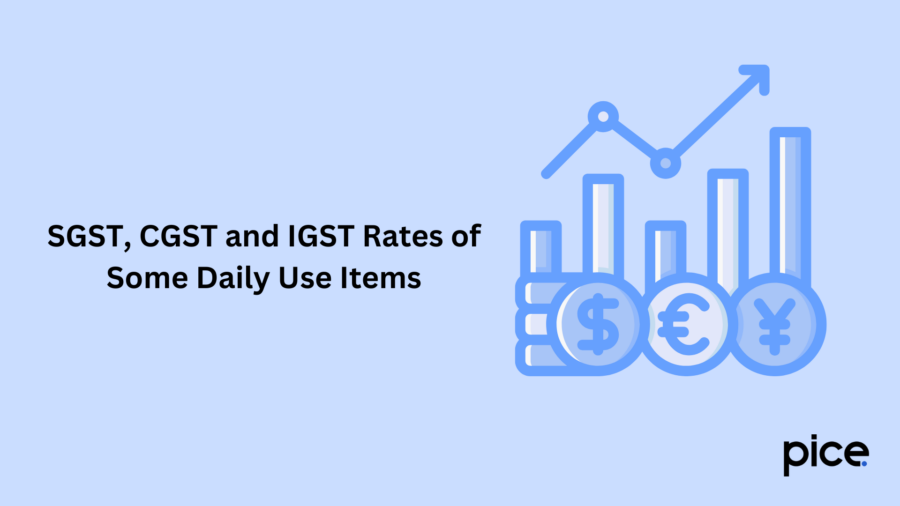What is SGST? A Comprehensive Guide
- 26 Dec 24
- 8 mins

What is SGST? A Comprehensive Guide
- SGST simplifies intra-state taxation under a unified framework.
- It is collected by the state where goods or services are consumed.
- Intra-state GST splits into equal CGST and SGST shares.
- SGST enables input tax credit, reducing tax cascading effects.
- Uniform SGST rates promote ease of doing business nationwide.
SGST, or State Goods and Services Tax, is one of the three types of GST returns, along with CGST and IGST, supporting the principle of ‘One tax, One nation’. It is governed by the State Goods and Service Tax Act, 2016.
These include all supplies of goods and services but specifically exclude alcoholic products for human consumption. It is collected on the value of the transaction in goods or services as envisaged under Section 15 of the SGST Act, 2017.
The transaction value refers to the amount paid or payable for the goods or services in question. Essentially, SGST is collected by the state where the goods or services are consumed, not the state where they are produced. To learn more about what is SGST, go through this blog.
Why was GST Implemented?

India's taxation system previously involved numerous indirect taxes levied by both the central and state governments. For example, the central government imposed Central State Tax (CST) on interstate sales of goods, while states implemented their own tax laws, leading to inconsistencies across the country.
Moreover, additional taxes such as entertainment tax, local tax, etc. added more layers to the already complex system. The lack of uniformity in taxation created hurdles for smooth interstate trade and resulted in overlapping taxes with varying rates between the center and states. This made it clear that a unified tax system like GST was necessary to simplify and streamline the process.
With a single comprehensive tax, the GST’s structured approach reduced the chances of tax evasion. It ensures every transaction is recorded and the correct tax is accounted for. By reducing the overall cost of goods and services, GST returns help curb the cascading effect of taxes. Businesses can claim input tax credits for taxes paid on purchases, supporting economic growth.
Features of SGST
The following are some key features of SGST:
- Simplified Taxation
SGST eliminates the need for various indirect taxes like VAT, excise duty, and service tax. This makes it easier to deal with and implement the tax system so that business information complies more appropriately with the regulations.
- Uniform Tax Rates
SGST sets up the same tax regime as a single, unified one throughout the country, free from the disparity of state taxation laws. Although every state has its own specific SGST Act, the general principles of the GST law for each state define the scope of the taxable event, valuation, and classification of goods and services. This makes the tax system standardized.
- Ease of Doing Business
GST streamlines the tax structure across the nation, removing the complexities of having different tax systems in each state. This uniform tax framework simplifies operations, especially for businesses engaged in interstate trade, offering significant benefits through standardisation.
- Input Tax Credit
SGST is expected to boost the economy by reducing the cost of goods and services. It prevents the tax cascading effect and allows businesses to claim input tax credits for the taxes paid on their purchases.
What Is State Goods and Services Tax (SGST) With Example?
The State Government imposes SGST returns on the intra-state supply of goods and services under the GST framework, as outlined in the SGST Act.
For example, let us say you are a seller in Delhi and you sell goods worth ₹40,000 to a buyer in Uttar Pradesh. The applicable GST rate is 18%, which is split into 9% CGST and 9% SGST. In this case, you will collect ₹7,200 as tax. Out of this, ₹3,600 will be paid to the Central Government, while the remaining ₹3,600 will be deposited with the Uttar Pradesh State Government.
Where SGST is Applicable?
Under GST, the applicability of SGST/UTGST, along with other components like IGST and CGST, is determined by the nature of the transaction. When it comes to transactions, they are categorized into two types: intra-state supply and inter-state supply.
Intra-State Supply
Intra-state supply refers to any transaction where the supplier and the place of supply are located within the same state or union territory. For such intrastate supplies of goods or services, the seller is required to collect both CGST and SGST. The amount of CGST is paid to the central government and the amount of SGST to the concerned state government.
Let us consider a manufacturing company based in Gujarat named Kavya Industries that sold merchandise products worth ₹3,00,000 to a retailer Shree Traders also based in Gujarat. The rate of GST is 18%, which has to be paid as total amount of GST ₹54,000. As this is an intra-state supply, the amount of tax is also divided between the central and the State Governments. Therefore ₹27,000 is transferred to the CGST account and the rest ₹27,000 to the SGST account.
Inter-State Supply
Inter-state supply occurs when the supplier’s location and the place of supply fall under these scenarios:
- A state and a Union Territory
- Two different States
- Two distinct Union Territories
Additionally, any supply made in a taxable territory that does not qualify as an intra-state supply is classified as an inter-state supply. The following interstate transactions are also considered taxable supplies:
- Import of goods or services into India
- Export of goods or services from India
- Supplies to or from Special Economic Zones (SEZs)
- Supply of goods or services to international tourists
For example, imagine you are a supplier based in Madhya Pradesh, and you provide goods worth ₹1,00,000 to a buyer in Punjab, with GST applied at 18%. Since this qualifies as an inter-state supply, the GST amount of ₹18,000 will be entirely deposited with the Central Government under the Integrated Goods and Services Tax head. This ensures compliance with the taxation rules for inter-state transactions.
SGST, CGST and IGST Rates of Some Daily Use Items

The following table mentions the SGST, CGST and IGST rates of some daily use items:
| Items | CGST | SGST | IGST |
| Processed foods and computers | 6% | 6% | 12% |
| Products used in everyday life, like tea, coffee, edible oil, sugar, and spices, fall under this category. It also includes essential medicines, charcoal, and traditional Indian sweets | 2.50% | 2.50% | 5% |
| Luxury tax items such as premium cars, air conditioners, cigarettes, high-end refrigerators, aerated beverages, and upscale motorcycles fall under this category | 14% | 14% | 28% |
| Personal care items like body soaps, toothpaste, and hair oil, along with industrial inputs and capital equipment | 9% | 9% | 18% |
How Frequently Are SGST Rates Revised?
Since the GST rates have been amended several times, the latest change was made after the 39th GST Council Meeting on 14 March, 2020. In time, some GST Council Meetings have dealt with certain rate amendments that were introduced later. To stay updated on different GST types and rate modifications, you can refer to the official website.
Conclusion
With this knowledge about what is SGST, it is evident that this tax is one of the key components of the GST structure as it deals with intra-state transactions. SGST makes the tax process simpler so that the taxes will be charged and collected at the point of consumption region-wise.
Always keeping yourself updated with the changes in the new SGST rate will help you to move around the taxation framework better, for the advantage of your business and the overall economy.
💡If you want to streamline your payment and make GST payments, consider using the PICE App. Explore the PICE App today and take your business to new heights.
 By
By 
















